Nickname(s) The Old Cavalryman Service/branch German Army Years of service 1905–42 Commands held 4th Panzer Army | Rank Generaloberst Name Erich Hoepner | |
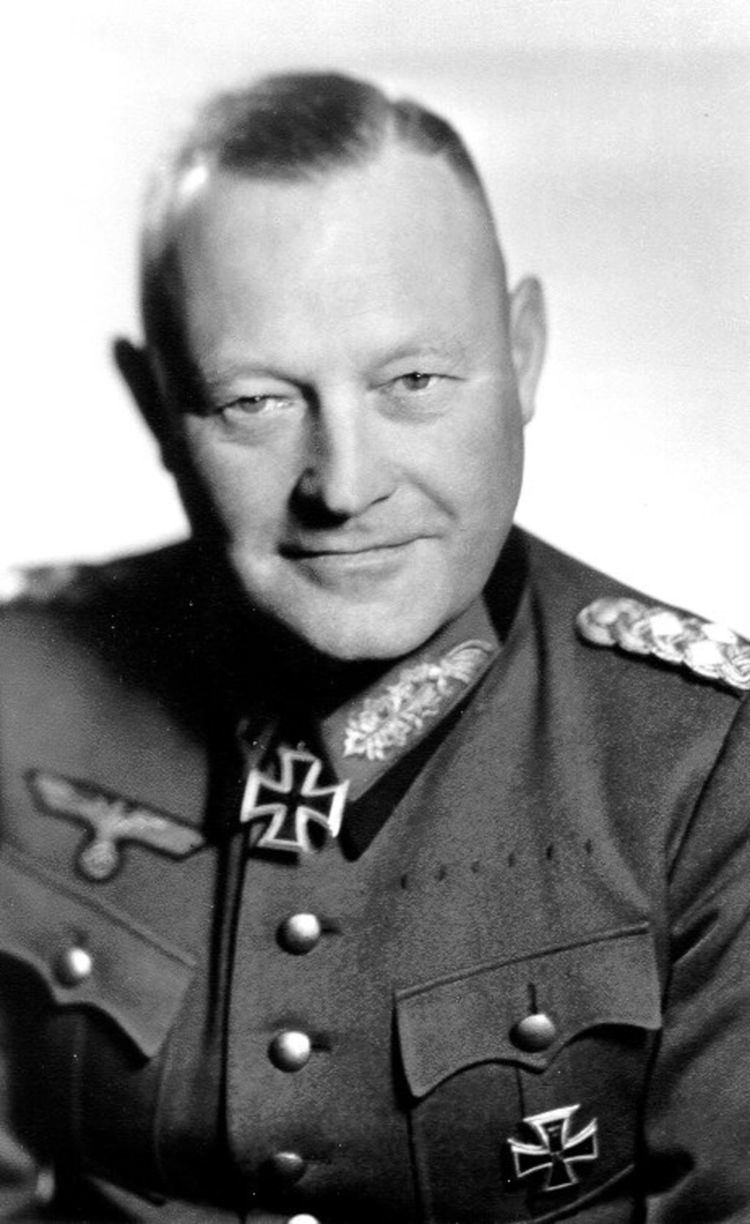 | ||
Born 14 September 1886Frankfurt an der Oder, Province of Brandenburg , Kingdom of Prussia, German Empire ( 1886-09-14 ) Battles/wars World War IWorld War II Similar People Wilhelm Ritter von Leeb, Heinz Guderian, Paul Ludwig Ewald vo, Rene Prioux, Albert Kesselring | ||
Erich Hoepner (14 September 1886 – 8 August 1944) was a German general in the Wehrmacht during World War II. As commander of the 4th Panzer Group on the Eastern Front, he pursued a policy of scorched earth, closely cooperated with the Einsatzgruppen and implemented the criminal Commissar Order. Hoepner was implicated in the failed 20 July Plot against Adolf Hitler and executed in 1944.
Contents
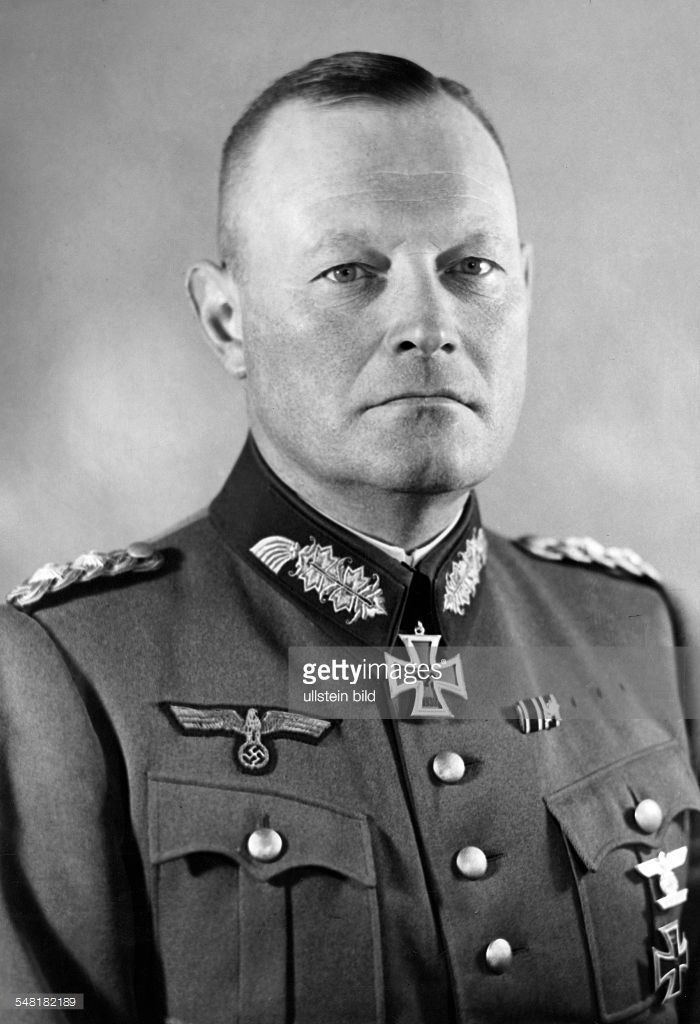
World War I and interwar period
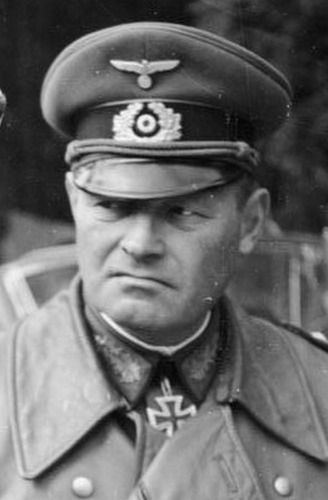
Hoepner joined the German Army in 1905 and served during World War I. He remained in the Reichswehr in the Weimar Republic, and then the Wehrmacht of Nazi Germany, reaching the rank of general in 1936. In 1938, he was given command of the XVI Panzer Corps.
World War II
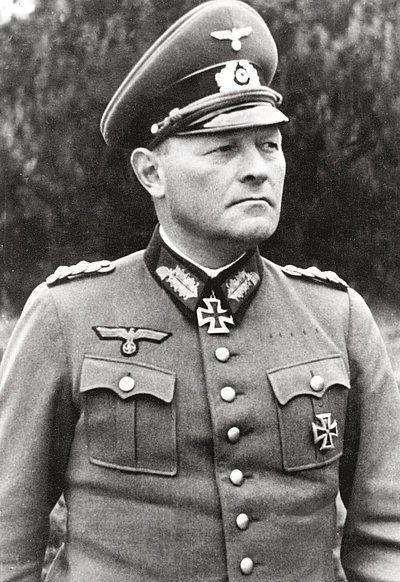
Hoepner commanded the XVI Army Corps (Motorised) in the invasions of Poland (1939) and France (1940), receiving the Knight's Cross of the Iron Cross. He was promoted to the rank of Generaloberst (colonel general) in 1941 and given command of the Fourth Panzer Group for the invasion of the Soviet Union.
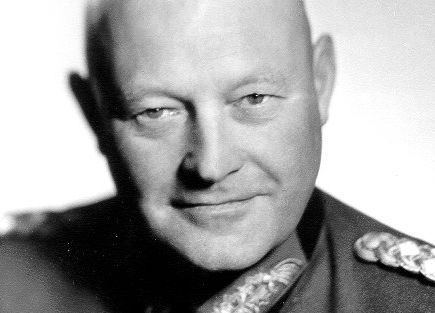
Hoepner was an active supporter of the planned war of annihilation (Vernichtungskrieg) against the Soviet Union. As a commander of the 4th Panzer Group, he wrote on 2 May 1941:
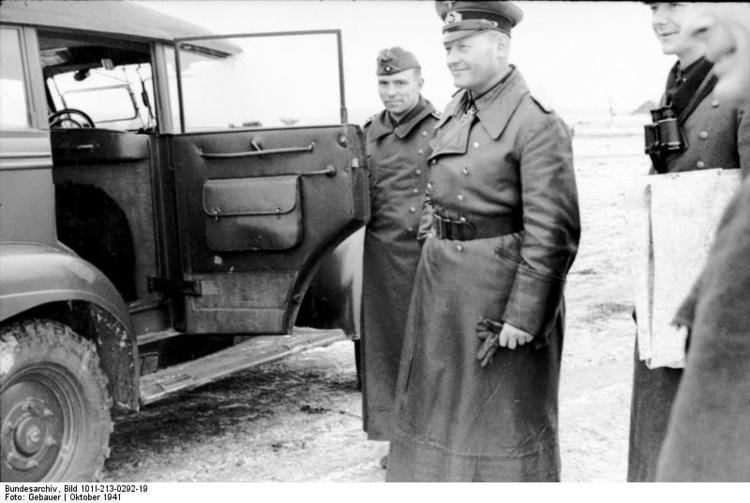
The war against Russia is an important chapter in the struggle for existence of the German nation. It is the old battle of Germanic against Slav peoples, of the defence of European culture against Muscovite-Asiatic inundation, and the repulse of Jewish-Bolshevism. The objective of this battle must be the destruction of present-day Russia and it must therefore be conducted with unprecedented severity. Every military action must be guided in planning and execution by an iron will to exterminate the enemy mercilessly and totally. In particular, no adherents of the present Russian-Bolshevik system are to be spared.
Eastern Front
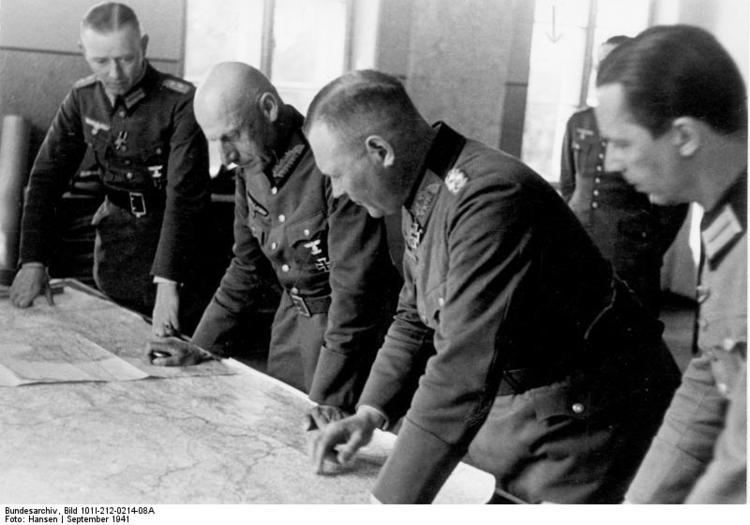
During his command on the Eastern Front, Hoepner pursued a policy of scorched earth, demanding "ruthless and complete destruction of the enemy".
As with all German armies on the Eastern Front, Hoepner's Panzer Group implemented the criminal Commissar Order. Franz Walter Stahlecker, the commander of Einsatzgruppe A, the mobile killing squad following the Wehrmacht into the occupied Soviet Union, described Wehrmacht's cooperation as "generally very good", and "in certain cases, as for example, with Panzer Group 4 under the command of General Hoepner, extremely close, one might say even warm".
On 5 December 1941 Hoepner ordered a retreat of his over-extended forces, refusing to comply with Hitler's rigid categorical 'Halt Order'. A month later, on 8 January 1942, Hoepner was dismissed from the Wehrmacht with the loss of all his pension rights. He launched a successful lawsuit against the Reich.
20 July Plot
Hoepner was a participant in the 20 July Plot in 1944 and was present at the Bendlerblock (Headquarters of the Replacement Army) with General of the Infantry (General der Infanterie) Friedrich Olbricht, Oberst (colonel) Claus von Stauffenberg, Oberst Albrecht Mertz von Quirnheim and Oberleutnant (first lieutenant) Werner von Haeften. Following the failure of the coup attempt, he had a private conversation with Generaloberst (colonel general) Friedrich Fromm and was not shot by firing squad with the others in the courtyard.
He was arrested that night, and then tortured by the Gestapo, given a summary trial by the Volksgerichtshof and sentenced to death. Like other defendants including Generalfeldmarschall (general field marshal) Erwin von Witzleben, Hoepner was made to wear ill fitting clothes and was not allowed to have his false teeth as a humiliation in his trial. Although judge Roland Freisler continued to verbally attack Hoepner brutally, even Freisler objected to Hoepner being made to dress in such a way. Hoepner was hanged on 8 August, in Berlin's Plötzensee Prison.
Under the Nazi practice of Sippenhaft, by which family members were punished collectively for the crimes of their kin, Hoepner's wife, daughter, son, sister, and brother were arrested and sent to Ravensbrück concentration camp, where Frau Hoepner and her daughter were placed in the notorious Strafblock for four weeks' additional punishment.
In 1956, a school in Berlin was named after Hoepner because he had joined the 20 July plot and was hanged by the Nazis. The school voted to drop the name in 2008. The publication The National quoted the school's director as saying in 2009: "The name had been controversial from the start and was repeatedly debated. I can't judge [Hoepner's] role in the resistance to Hitler, but many aspects of his role in World War Two are less than salubrious."
